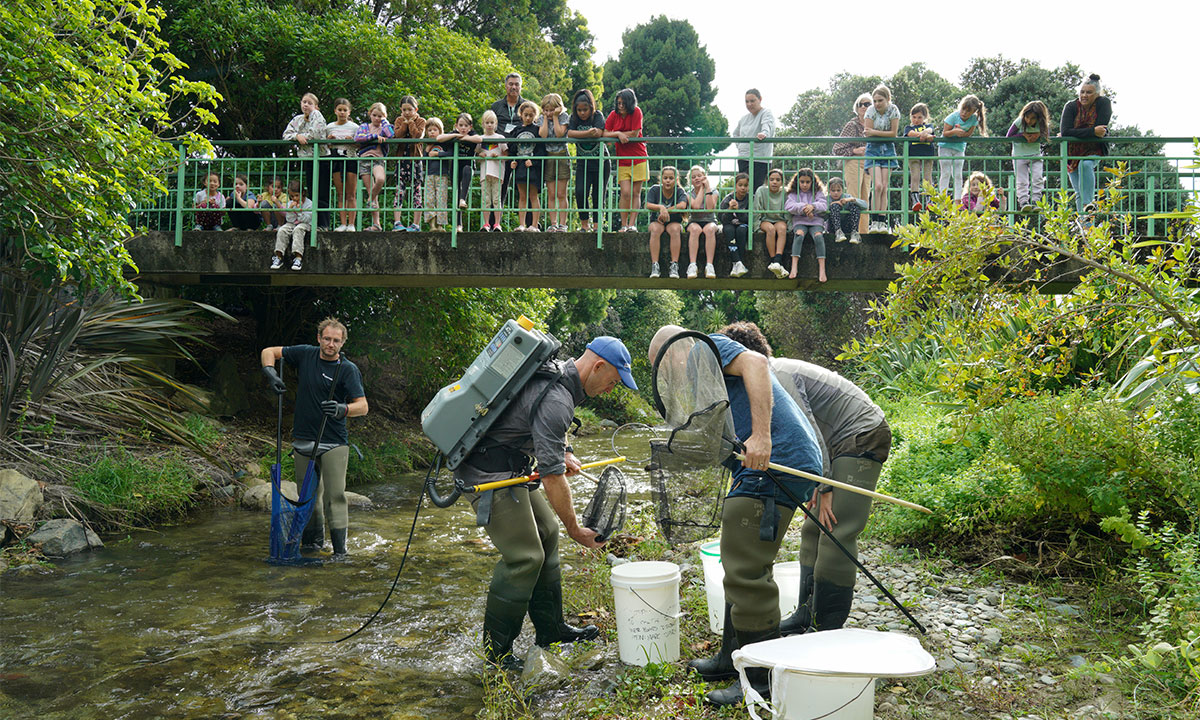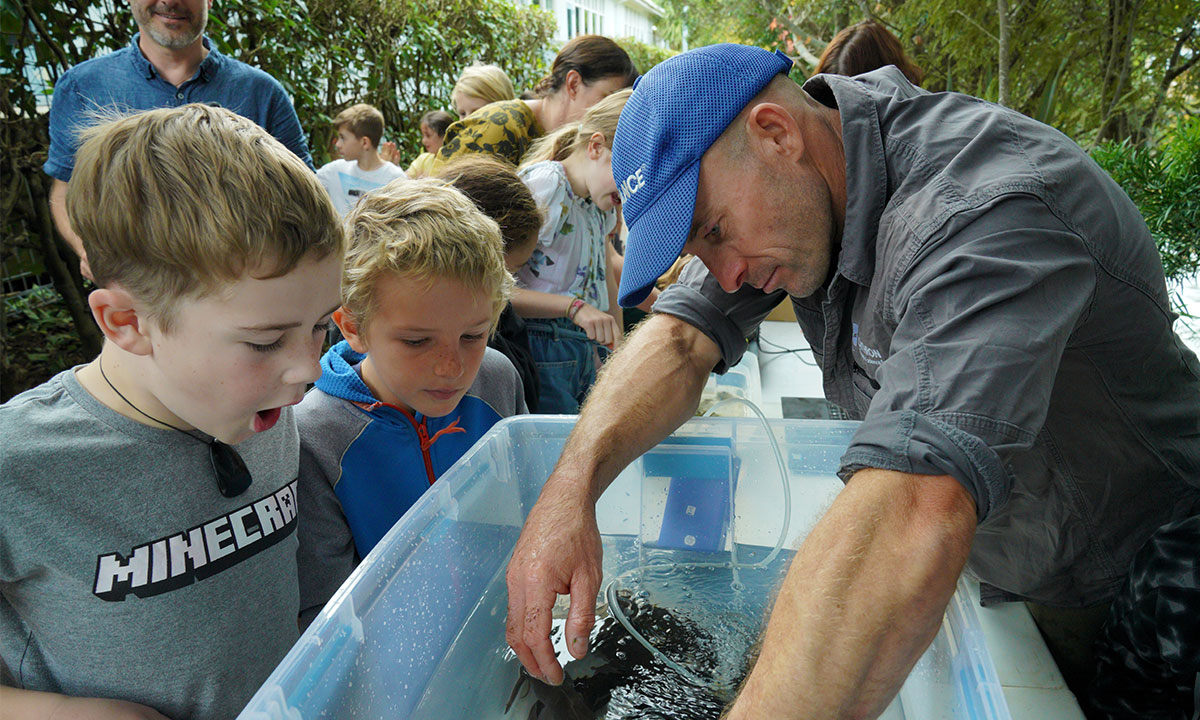Cawthron scientists had Nelson Central School’s Te Pouahi Māori Medium Class hooked when they involved them in the collection of tuna for a research project to identify spawning grounds in the Pacific Ocean.
Scientists needed to collect up to 12 tuna (long finned and short fin eels) and keep them in a tank for 48 hours to collect the DNA that they secreted into the water during this time before returning them to their natural environment. This is the first phase in a three-year Marsden Fund project which is led by Dr Amandine Sabadel from the University of Otago and involves scientists from the Universities of San Diego and Tokyo, as well as from Cawthron and NIWA.
Cawthron Institute molecular surveillance expert Dr Xavier Pochon – an associate researcher on the project – said it was essential to involve tamariki in their mahi.
“Education is everything and should be an integral part of cutting-edge research, Pochon said.
“I strongly believe that the tools we are developing can transform our ability to monitor the health of our aquatic ecosystems and therefore it is essential to share this knowledge in a way that everyone can understand. There is no better way to do this than with young tamariki.’’
Another Cawthron scientist, Dr Simon Stewart, is leading a different Marsden Fund project that involves tuna and Mātauranga Māori.
“I feel a particular responsibility to support tangata whenua engagement with and knowledge of eels, and this is a key aspiration of my project,” Stewart said.
He suggested to Pochon that Te Pouahi would make a good audience for the tuna collection.
Pochon said it was brilliant that Stewart ran a session with the class to explain the concepts prior to collecting the tuna.
“When we were there, the kids were all super switched on. I was absolutely amazed and my heart totally melted when we asked them if they knew what DNA was and one said it was like a string of life.
“Lots of tamariki talked to me about eDNA and wanted to know more.”
The students accompanied scientists to the neighbouring Brooke Stream where Matua Kim Hippolite from Ngāti Kuia said a karakia. He also explained the longstanding relationship Ngāti Kuia has with the stream. Tamariki then watched from a bridge over the stream as Cawthron staff used electrofishing to collect the tuna. Their excitement was discernible as the tuna were discovered and captured.
Dr Pochon said the whole process went incredibly well, with scientists extracting lots of useful data from the tanks that the eels were kept in.
“They showed no signs of stress or anything and we were super happy to be able to release them back into their environment a couple of days later.”
Lots of analysis is now being undertaken on the data collected. Phase two will take place next year. It involves going out to sea on a floating laboratory and collecting samples across a large geographic area and down to 1000 metres.
“The main goal is to decipher the spawning grounds of New Zealand eels in the South Pacific. It’s a massive mystery and after all these years, we still don’t know.”
“All the indicators being developed in the project will also benefit river monitoring and eels conservation efforts throughout New Zealand.”

Image: Cawthron Institute. The Cawthron team carefully collecting tuna under the watchful eyes of Nelson Central School’s Te Pouahi Māori Medium Class.
